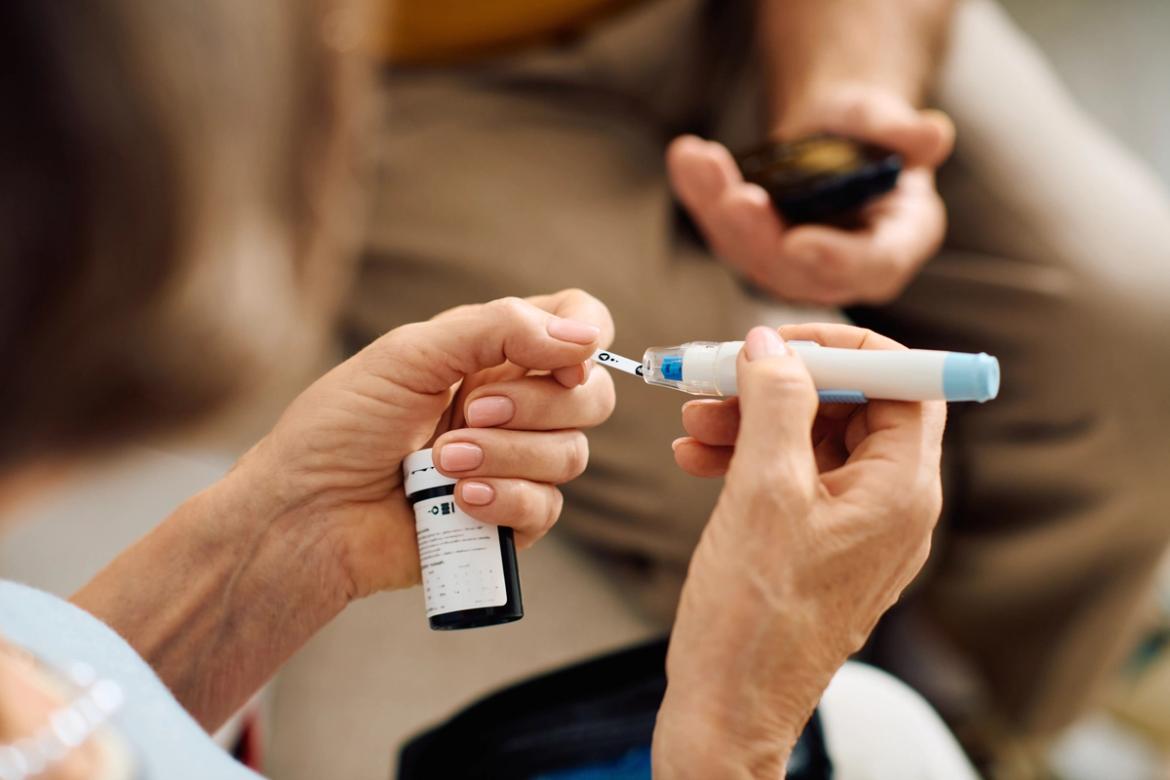Key Takeaways
- Classic diabetes symptoms like thirst and frequent urination may be less noticeable in older adults and can be mistaken for normal aging or other health issues.
- Identifying signs such as unexplained fatigue, slow-healing wounds, or cognitive changes can lead to earlier diagnosis and reduce the risk of severe complications.
- Managing diabetes in older adults requires a team-based approach, including regular screenings, lifestyle adjustments, and support from caregivers and healthcare providers.
Diabetes affects over 29% of adults aged 65 and older in the United States, making early recognition of symptoms crucial for timely treatment and better health outcomes.
Understanding the unique ways diabetes presents in older adults individuals can help families and caregivers identify warning signs before complications develop.
Why Diabetes is Different in Older Adults
Diabetes in older adults often develops gradually and can be easily mistaken for normal aging processes.
Type 2 diabetes, the most common form in older adults, may go undiagnosed for years because symptoms can be subtle or attributed to other age-related conditions.
Differences in older adults:
- Classic symptoms such as increased thirst and urination may be absent or less noticeable in older adults.
- Higher risk of complications due to existing health conditions
- Medications may mask or interact with diabetes symptoms
- Cognitive changes can affect symptom recognition and self-care
7 Signs of Diabetes in Older Adults
1. Increased Urination and Thirst
Increased urination and thirst often becomes particularly problematic for older adults who may already have age-related changes in kidney function.
What to look for: Frequent trips to the bathroom, especially at night (nocturia), combined with persistent thirst that doesn't seem to be satisfied by drinking fluids.
Why it happens: High blood sugar levels cause the kidneys to work harder to filter excess glucose, leading to increased urination and subsequent dehydration.
2. Unexplained Fatigue and Weakness
Older adults may dismiss fatigue or weakness as a natural part of aging, but diabetes-related fatigue is distinctly different from normal tiredness.
It often presents as an overwhelming exhaustion that makes simple tasks like getting dressed or preparing meals feel monumentally difficult.
This type of fatigue doesn't improve with rest and may be accompanied by a general feeling of weakness that affects mobility and independence, potentially leading to social isolation as daily activities become too challenging.
What to look for: Persistent tiredness that interferes with daily activities, even after adequate rest. This fatigue may worsen throughout the day or after meals.
Why it happens: When cells cannot effectively use glucose for energy due to insulin resistance, the body experiences chronic fatigue.
3. Slow-Healing Wounds and Infections
Small cuts from everyday activities like gardening or cooking may become persistent wounds that show little improvement over weeks.
Skin infections, especially fungal infections in warm, moist areas like between toes or under skin folds, may become recurring problems.
What to look for: Cuts, bruises, or sores that take weeks to heal, frequent skin infections, or recurring urinary tract infections.
Why it happens: High blood glucose levels impair immune function and reduce blood circulation, slowing the healing process.
4. Blurred Vision or Vision Changes
Vision problems in older adults with undiagnosed diabetes can be particularly dangerous as they may lead to falls, medication errors, or difficulty driving safely.
Unlike age-related vision changes that typically progress gradually, diabetes-related vision problems can fluctuate throughout the day depending on blood sugar levels.
What to look for: Difficulty reading, focusing problems, or fluctuating vision that seems to improve and worsen throughout the day.
Why it happens: Fluctuating blood sugar levels can cause the lens of the eye to swell, affecting focus and clarity.
5. Unintentional Weight Loss
Unintentional weight loss in older adults can be particularly alarming and may be noticed first by family members or caregivers.
This weight loss often occurs despite maintaining normal eating habits or even increased appetite.
What to look for: Losing 5-10 pounds or more over a few weeks or months without changes in diet or exercise habits.
Why it happens: When the body cannot use glucose effectively, it begins breaking down muscle and fat for energy.
6. Increased Hunger Despite Eating
This symptom can be confusing for older adults and their families, as the person may seem to have a good appetite and eat regular meals, yet still complain of hunger.
What to look for: Feeling hungry shortly after meals or experiencing cravings for carbohydrate-rich foods.
Why it happens: Despite eating, cells aren't receiving adequate glucose, triggering hunger signals.
7. Tingling or Numbness in Hands and Feet
Nerve damage from diabetes often begins in the feet and hands, progressing upward if left untreated. Older adults may initially dismiss these sensations as arthritis or normal aging, but diabetic neuropathy has distinct characteristics.
The tingling often worsens at night, potentially disrupting sleep, and may be accompanied by sharp, shooting pains or a burning sensation.
What to look for: Pins and needles sensation, burning feelings, or loss of sensation in extremities, particularly at night.
Why it happens: High blood sugar levels can damage nerves over time, a condition called diabetic neuropathy.
Less Obvious Diabetes Symptoms Often Missed
While the seven primary symptoms above are the most recognizable signs of diabetes, several subtler indicators are frequently overlooked, especially in older adults.
Cognitive Changes
Mild confusion, difficulty concentrating, dizziness, or memory problems can be early signs of diabetes in older adults. These symptoms are often dismissed as normal aging but may indicate blood sugar fluctuations affecting brain function.
Mood Changes and Irritability
Unexplained mood swings, increased anxiety, or depression can be related to blood sugar imbalances and should not be ignored.
Digestive Issues
Gastroparesis, a condition where the stomach empties slowly, can cause nausea, vomiting, and unpredictable blood sugar levels in diabetic older adults.
Balance Problems and Falls
Poor circulation and nerve damage from diabetes can affect balance and coordination, increasing fall risk in older individuals.
When to Seek Medical Attention
Seek immediate medical care if experiencing:
- Blood sugar readings above 300 mg/dL
- Signs of diabetic ketoacidosis (fruity breath odor, rapid breathing, confusion)
- Severe dehydration or inability to keep fluids down
- Chest pain or difficulty breathing
Schedule a routine screening if:
- You're over 45 years old
- Multiple symptoms are present
- You have risk factors for diabetes
- It's been more than 3 years since your last blood sugar test
Risk Factors for Diabetes
Understanding risk factors helps identify who should be monitored more closely. While some risk factors cannot be changed, recognizing them helps healthcare providers and families develop appropriate screening schedules and prevention strategies.
Non-modifiable Risk Factors
- Age over 45: The risk of developing Type 2 diabetes increases dramatically with age, particularly after 45. By age 65, approximately one in four adults has diabetes, and nearly half have prediabetes.
- Family history of diabetes
- History of gestational diabetes
- Certain ethnicities (African Americans, Hispanics, Native Americans, Asian Americans, and Pacific Islanders have higher rates of diabetes.)
Modifiable Risk Factors
- Overweight or obesity (BMI over 25)
- Sedentary lifestyle
- High blood pressure (hypertension)
- Abnormal cholesterol levels
- Heart disease risk profile
- Prediabetes diagnosis (fasting glucose 100-125 mg/dL or HbA1c 5.7-6.4%), which affects nearly half of U.S. adults aged 65 and older.
Diabetes Prevention and Management Tips
Lifestyle Modifications
- Diet: Focus on whole grains, lean proteins, vegetables, and fruits while limiting processed foods and sugary beverages. Consider working with a registered dietitian for personalized meal planning.
- Exercise: Aim for 150 minutes of moderate-intensity aerobic activity per week, plus strength training exercises twice weekly. Always consult with healthcare providers before starting new exercise routines.
- Weight Management: Even modest weight loss (5-10% of body weight) can significantly improve blood sugar control.
Regular Monitoring
- Annual or bi-annual diabetes screenings for at-risk individuals
- Regular blood pressure and cholesterol checks
- Comprehensive eye exams
- Foot examinations for signs of nerve damage or circulation problems
Medication Management
- Work with your care providers to understand all medications and their potential interactions
- Monitor for side effects that might mask diabetes symptoms
How to Get Support for Diabetes
Managing diabetes as an older adult often requires a team approach:
- Primary care physician or endocrinologist
- Certified diabetes educator
- Registered dietitian
- Pharmacist
- Family members or caregivers
- Support groups for older adults with diabetes
- Health advocate, such as Pinnie to assist with guiding you through your diabetes management journey
Bottom Line
Recognizing the signs of diabetes in older adults requires attention to both obvious and subtle symptoms. While some changes may seem like normal aging, persistent symptoms warrant medical evaluation. Early detection and proper management can help older adults with diabetes maintain their health, independence, and quality of life.
If you or a loved one is experiencing multiple symptoms described in this article, don't wait to seek medical attention. A simple blood test can determine if diabetes is present, and early intervention can make all the difference in long-term health outcomes.



